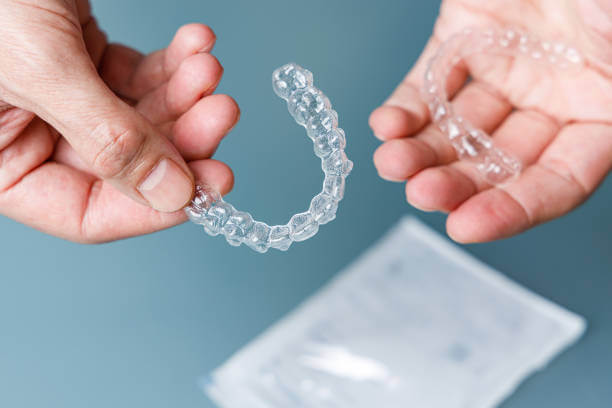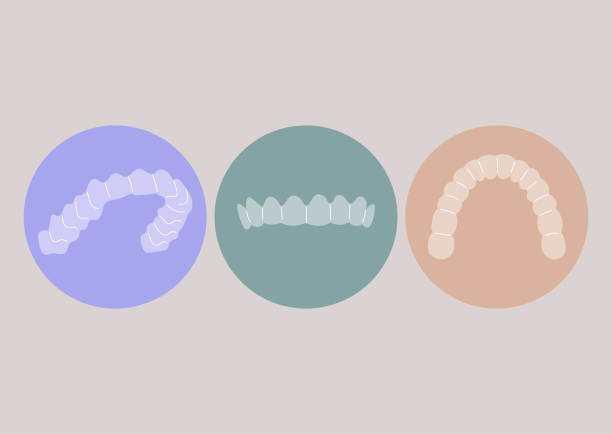Are you thinking about improving your smile by straightening your teeth? You might know of two popular treatment options – Invisalign Express and traditional Invisalign. But how can you determine which one suits you best? This article will compare both treatments based on effectiveness, conditions treated, advantages, and qualifying requirements. With this information from your Fairview dentist, you can make an informed decision and select the best option that aligns with your goals and needs.

When considering Invisalign treatments, you have two choices: Traditional Invisalign (also called Invisalign Full) and Invisalign Express (also called Invisalign Lite). Invisalign’s comprehensive treatment encompasses personalized aligners, continuous monitoring by a dentist, and typically involves a gradual shift of your teeth over an average span of 12 months.
On the other hand, Express treatment provides the same advantages as traditional Invisalign, with the primary distinction being the shorter treatment duration. You can choose from three Express options: Express 5, Express 10, or Invisalign 17, each tailored to meet your specific preferences and requirements.
Traditional Invisalign is effective for any condition, while Express is best suited for minor crowding and spacing in the front six teeth. The number of removable aligners needed varies depending on severity; typically, 25+ are used, while only 5-10 are utilized in the Express version. During your consultation, your dentist can advise you on which orthodontic solution would work best for your needs.
With Express, you can get the same great smile in a fraction of the time! Invisalign Express is designed for those who only have minor orthodontic issues. It’s perfect for crowded or spaced front six teeth, and takes only four to six months to complete. Compared to traditional Invisalign, which usually takes 12-18 months, this shorter treatment time makes it more convenient and cost-effective.
If you’re seeking a discreet orthodontic solution that involves minimal adjustments to your smile, you might be a good candidate for a shorter treatment option known as Invisalign Express. This tailored option is primarily designed for adults and teenagers who exhibit minor spacing or crowding issues of less than 2 mm per arch. It’s also suitable for individuals who previously wore braces but have experienced slight tooth movement due to discontinued retainer use.
To determine your eligibility, it’s crucial to consult with a dentist who can ensure the most favorable outcome. Typically, approved patients undergoing Invisalign Express require fewer appointments and visits compared to traditional Invisalign treatments, making it a highly convenient choice.

Traditional Invisalign is highly versatile and can effectively resolve a broad spectrum of common orthodontic concerns. This includes crowding, gaps between teeth, overlap, overbites, underbites, crooked teeth, and more.
In fact, Invisalign treatment can correct most of the same problems that conventional braces can address. The only exceptions arise in cases involving skeletal misalignments, where the positioning of the jawbones is significantly off. In such instances, a comprehensive approach combining oral surgery and traditional metal braces may be necessary to rectify the condition fully.
This streamlined version of the renowned Invisalign treatment offers several compelling reasons to consider it for your smile transformation journey. Here are four key reasons why Invisalign Express could be the ideal option for addressing your dental needs to a beautiful smile:
Yes, Invisalign Express usually has a lower cost in comparison to the full Invisalign treatment due to the fewer aligners needed and shorter treatment time. Most dentists provide a payment plan to make both treatments more affordable, however, the exact cost will vary depending on the individual’s treatment needs and geographical location.
Whether you choose Invisalign Express or Traditional Invisalign, dental visits are usually scheduled every 3-6 weeks for progress review and handover of the new aligner sets. The frequency of the office visit may vary depending on the complexity of the misalignment and your dentist’s recommendations.

Invisalign Express and traditional Invisalign are great options for discreetly realigning your teeth. Express is quicker and more convenient than traditional Invisalign, but it can only correct minor issues. Traditional Invisalign can fix severe jaw misalignment and takes longer to complete.
If you’re searching for a discreet treatment option that doesn’t significantly interrupt your routine in the Fairview Allen area, considering Invisalign Express is a worthwhile choice! At Sloan Creek Dental, we offer a custom treatment plan that fits your orthodontic needs. Contact us at our Fairview, TX dental office to schedule your dental appointment at 972-468-1440.
We firmly believe that the internet should be available and accessible to anyone, and are committed to providing a website that is accessible to the widest possible audience, regardless of circumstance and ability.
To fulfill this, we aim to adhere as strictly as possible to the World Wide Web Consortium’s (W3C) Web Content Accessibility Guidelines 2.1 (WCAG 2.1) at the AA level. These guidelines explain how to make web content accessible to people with a wide array of disabilities. Complying with those guidelines helps us ensure that the website is accessible to all people: blind people, people with motor impairments, visual impairment, cognitive disabilities, and more.
This website utilizes various technologies that are meant to make it as accessible as possible at all times. We utilize an accessibility interface that allows persons with specific disabilities to adjust the website’s UI (user interface) and design it to their personal needs.
Additionally, the website utilizes an AI-based application that runs in the background and optimizes its accessibility level constantly. This application remediates the website’s HTML, adapts Its functionality and behavior for screen-readers used by the blind users, and for keyboard functions used by individuals with motor impairments.
If you’ve found a malfunction or have ideas for improvement, we’ll be happy to hear from you. You can reach out to the website’s operators by using the following email
Our website implements the ARIA attributes (Accessible Rich Internet Applications) technique, alongside various different behavioral changes, to ensure blind users visiting with screen-readers are able to read, comprehend, and enjoy the website’s functions. As soon as a user with a screen-reader enters your site, they immediately receive a prompt to enter the Screen-Reader Profile so they can browse and operate your site effectively. Here’s how our website covers some of the most important screen-reader requirements, alongside console screenshots of code examples:
Screen-reader optimization: we run a background process that learns the website’s components from top to bottom, to ensure ongoing compliance even when updating the website. In this process, we provide screen-readers with meaningful data using the ARIA set of attributes. For example, we provide accurate form labels; descriptions for actionable icons (social media icons, search icons, cart icons, etc.); validation guidance for form inputs; element roles such as buttons, menus, modal dialogues (popups), and others. Additionally, the background process scans all of the website’s images and provides an accurate and meaningful image-object-recognition-based description as an ALT (alternate text) tag for images that are not described. It will also extract texts that are embedded within the image, using an OCR (optical character recognition) technology. To turn on screen-reader adjustments at any time, users need only to press the Alt+1 keyboard combination. Screen-reader users also get automatic announcements to turn the Screen-reader mode on as soon as they enter the website.
These adjustments are compatible with all popular screen readers, including JAWS and NVDA.
Keyboard navigation optimization: The background process also adjusts the website’s HTML, and adds various behaviors using JavaScript code to make the website operable by the keyboard. This includes the ability to navigate the website using the Tab and Shift+Tab keys, operate dropdowns with the arrow keys, close them with Esc, trigger buttons and links using the Enter key, navigate between radio and checkbox elements using the arrow keys, and fill them in with the Spacebar or Enter key.Additionally, keyboard users will find quick-navigation and content-skip menus, available at any time by clicking Alt+1, or as the first elements of the site while navigating with the keyboard. The background process also handles triggered popups by moving the keyboard focus towards them as soon as they appear, and not allow the focus drift outside of it.
Users can also use shortcuts such as “M” (menus), “H” (headings), “F” (forms), “B” (buttons), and “G” (graphics) to jump to specific elements.
We aim to support the widest array of browsers and assistive technologies as possible, so our users can choose the best fitting tools for them, with as few limitations as possible. Therefore, we have worked very hard to be able to support all major systems that comprise over 95% of the user market share including Google Chrome, Mozilla Firefox, Apple Safari, Opera and Microsoft Edge, JAWS and NVDA (screen readers), both for Windows and for MAC users.
Despite our very best efforts to allow anybody to adjust the website to their needs, there may still be pages or sections that are not fully accessible, are in the process of becoming accessible, or are lacking an adequate technological solution to make them accessible. Still, we are continually improving our accessibility, adding, updating and improving its options and features, and developing and adopting new technologies. All this is meant to reach the optimal level of accessibility, following technological advancements. For any assistance, please reach out to